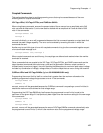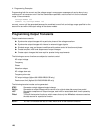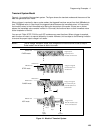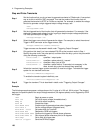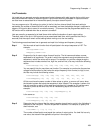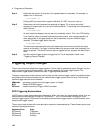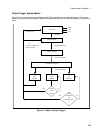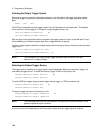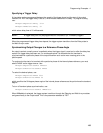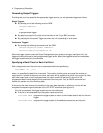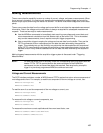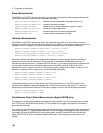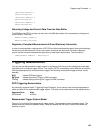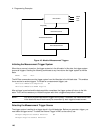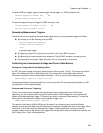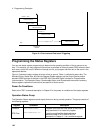
Programming Examples - 4
135
Specifying a Trigger Delay
A time delay can be programmed between the receipt of the trigger signal and the start of the output
transient. At *RST the trigger delay is set to 0, which means that there is no delay. To program a delay,
use:
TRIGger:SEQuence1:DELay .01or
TRIGger:TRANsient:DELay .01
which sets a delay time of 10 milliseconds.
NOTE: A trigger delay can only be programmed for SEQuence1 (or TRANsient) triggers.
When the programmed trigger delay has elapsed, the trigger system transitions from the Delay state to
the Wait-for-sync state.
Synchronizing Output Changes to a Reference Phase Angle
An output transient normally occurs immediately when the trigger signal is received, or after the delay has
expired if a trigger delay has been set. For some applications it is desirable that the transient is
synchronized with a particular phase of the output waveform such as the zero crossing point or the
positive peak.
To synchronize the start of a transient with a particular phase of the internal phase reference, you must
select PHASE as the trigger source. Use:
TRIGger:SEQuence2:SOURce PHASeor
TRIGger:SYNChronize:SOURce PHASe
To select the desired phase, use:
TRIGger:SEQuence2:PHASe 90or
TRIGger:SYNChronize:PHASe 90
which specifies the 90 degree phase angle of the internal phase reference as the point where the transient
begins.
To turn off transient phase synchronization, use:
TRIGger:SYNChronous:SOURce IMMediate
When IMMediate is selected, the trigger system transitions through the Delaying and Wait-for-sync states
and goes directly to the Output state. This is the parameter selected at *RST.



